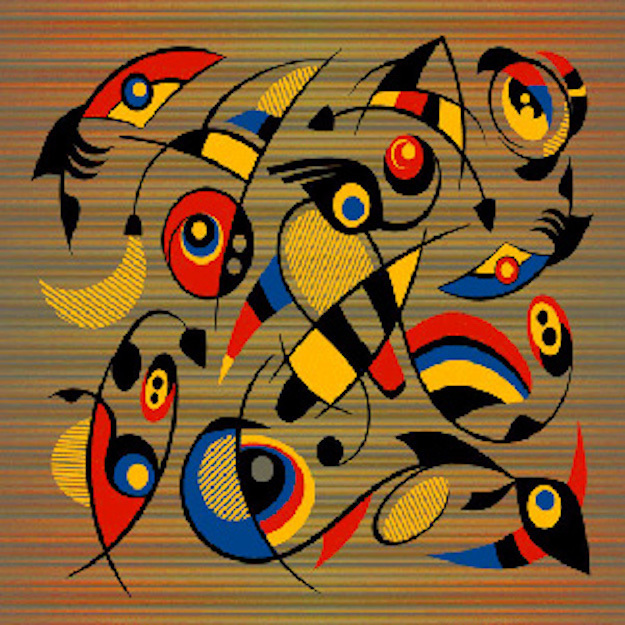Art Lovers discussion
Guess Who (by artist bio)
>
Who are You?---Joan Miro
date newest »
newest »
 newest »
newest »
 Heather wrote: "Carol got it! Good job! It is Miro!"
Heather wrote: "Carol got it! Good job! It is Miro!"Thanks I wouldn't have got it without Dirk's post though. :)
 Carol ꧁꧂ wrote: "Thanks I wouldn't have got it without Dirk's post though. :)"
Carol ꧁꧂ wrote: "Thanks I wouldn't have got it without Dirk's post though. :)"Well, good job Dirk and Carol!
 Thanks, I was indeed thinking about Miro ;-)
Thanks, I was indeed thinking about Miro ;-)This is a nice one, although if it comes to surrealism I'm more of a Max Ernst fan.







Despite his professed desire to forge a career in the arts, at the behest of his parents, ____________attended the School of Commerce from 1907-10. His relatively brief foray into the business world, characterized by constant study, instilled a strong sense of order and a robust work ethic in _______ but at a very high cost. Following what has been characterized as a nervous breakdown, __________ abandoned his business career and subsequently devoted himself fully to making art.
In 1919, ___________ moved to Paris to continue his artistic development. Due to considerable financial hardship, his life in Paris was difficult at first. When discussing his life during those first lean, early years in Paris, the artist quipped, "How did I think up my drawings and my ideas for painting? Well, I'd come home to my Paris studio in Rue Blomet at night, I'd go to bed, and sometimes I hadn't had any supper." It seems that physical deprivation enlivened the young ____________'s imagination. "I saw things," he explained, "and I jotted them down in a notebook. I saw shapes on the ceiling..."
He became friends with the Surrealist writer André Breton, forming a relationship that lasted for many years. The Surrealists were most active in Paris during the 1920s, having formally joined forces in 1924 with the publication of their Surrealist Manifesto. Their members, led by Breton, promoted "pure psychic automatism," which heavily informed _____________'s work. While the Surrealists experimented with the irrational in art and writing, ___________'s art manifested these dream-like qualities, becoming increasingly biomorphic, enigmatic, and innovative.
He was still residing in Paris when war broke out in Europe, and by 1941 ___________ was forced to flee to Mallorca with his family. Perhaps not surprisingly, warfare and political tension were prominent themes in his art during this period; his canvases became increasingly grotesque and brutal.
By the mid-1950s, ______________ had begun working on a much larger scale, both on canvas and in ceramics.
Along with other Dada and Surrealist artists, ____________ explored the possibility of creating an entirely new visual vocabulary for art that, while not divorced from the objective world, could exist outside of it. Rather than transitioning to complete abstraction, _____________'s biomorphic forms remained within the bounds of objectivity. However, they were forms of pure invention and were made expressive and imbued with meaning through their juxtaposition with other forms and the artist's use of color.
___________'s art never became fully non-objective. Rather than resorting to complete abstraction, the artist devoted his career to exploring various means by which to dismantle traditional precepts of representation. ___________'s radical, inventive style was a critical contributor in the early-20th-century avant-garde journey toward increasing and then complete abstraction.
____________ balanced the kind of spontaneity and automatism encouraged by the Surrealists with meticulous planning and rendering to achieve finished works that, because of their precision, seemed plausibly representational despite their considerable level of abstraction.
_______________often worked with a limited palette, yet the colors he used were bold and expressive. His chromatic explorations, which emphasized the potential of fields of unblended color to respond to one another, provided inspiration for a generation of Color Field painters."
Who Am I?
(view spoiler)[https://www.theartstory.org/artist-mi... (hide spoiler)]